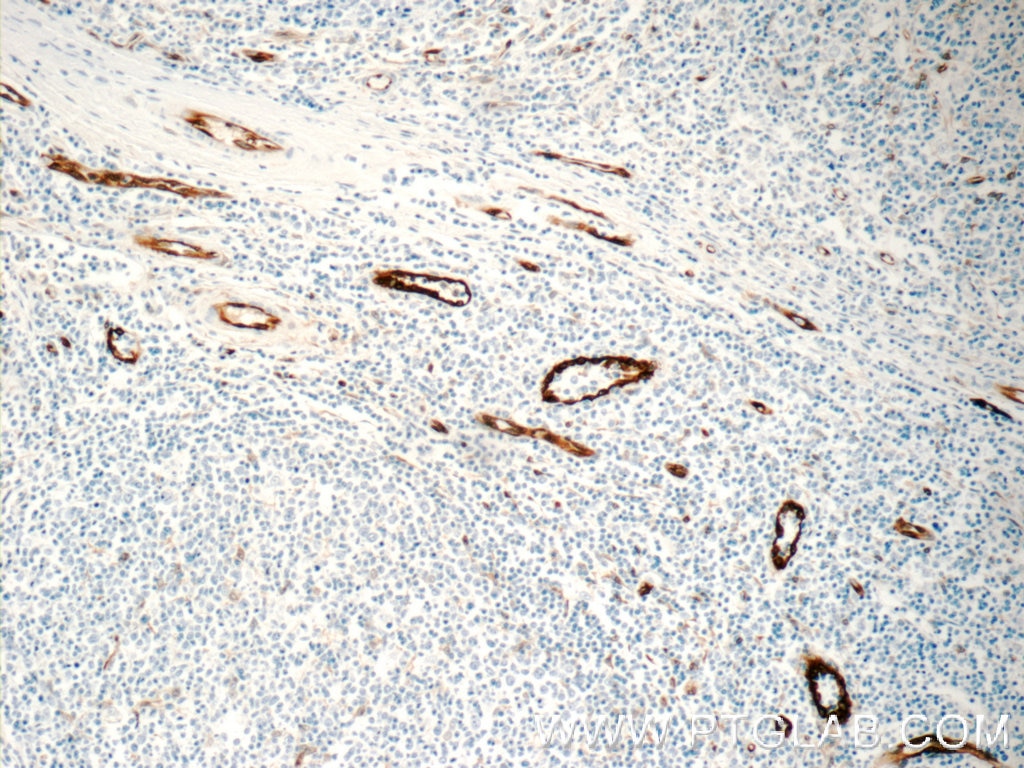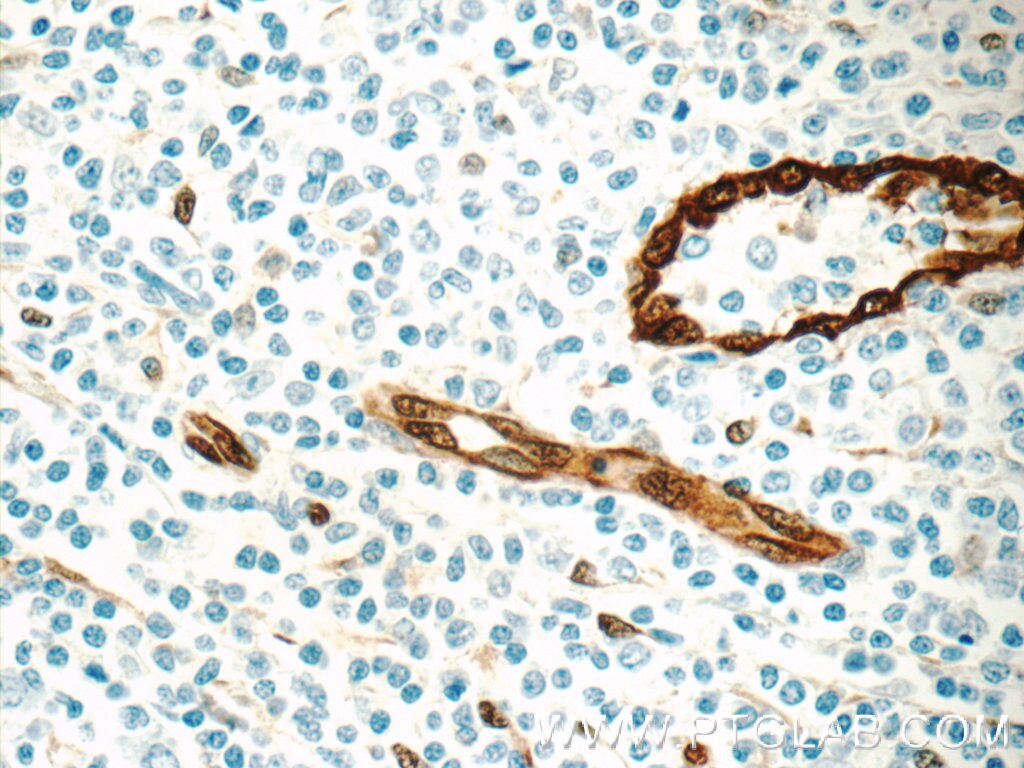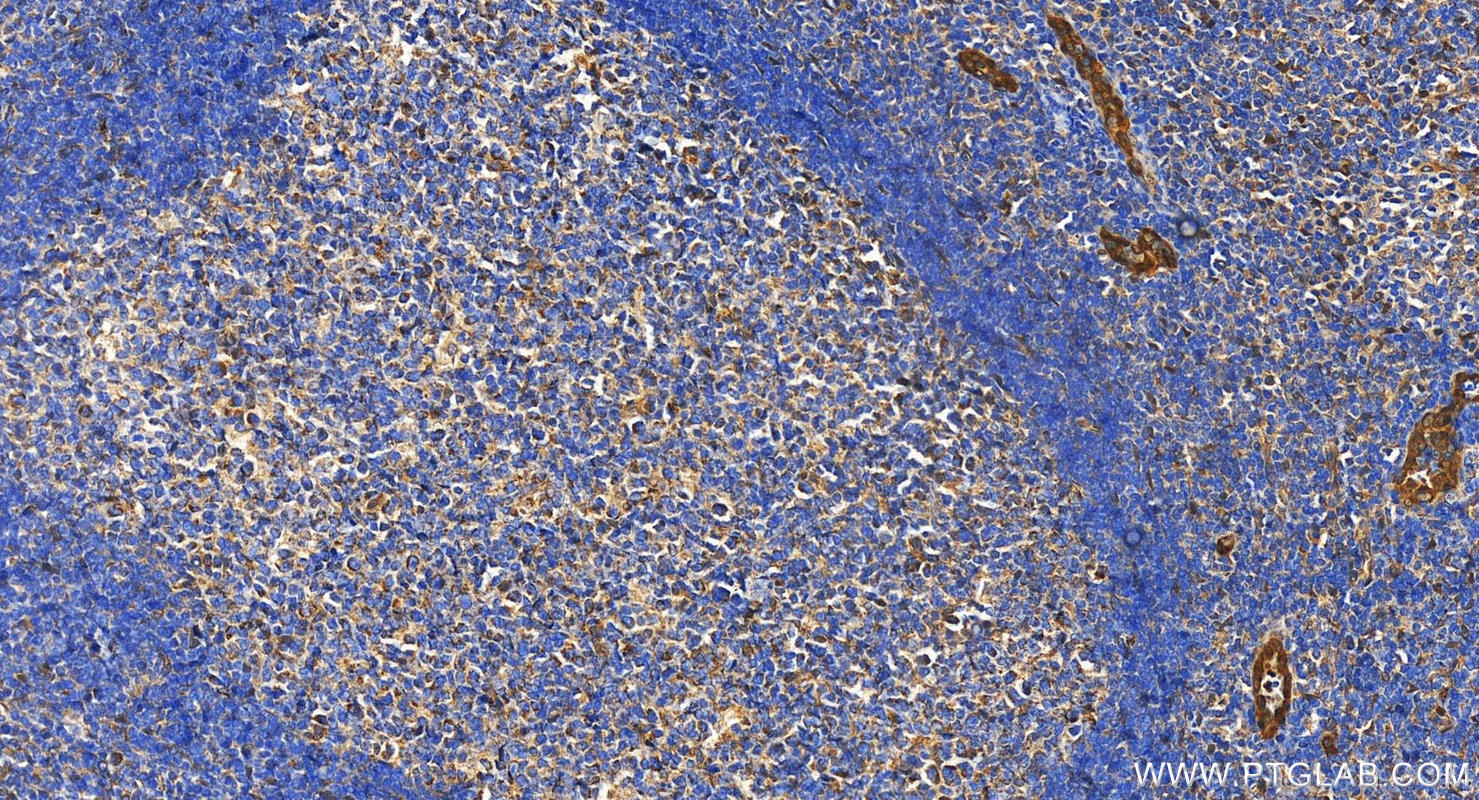Tested Applications
| Positive IHC detected in | human tonsillitis tissue Note: suggested antigen retrieval with TE buffer pH 9.0; (*) Alternatively, antigen retrieval may be performed with citrate buffer pH 6.0 |
Recommended dilution
| Application | Dilution |
|---|---|
| Immunohistochemistry (IHC) | IHC : 1:200-1:1200 |
| It is recommended that this reagent should be titrated in each testing system to obtain optimal results. | |
| Sample-dependent, Check data in validation data gallery. | |
Published Applications
| WB | See 1 publications below |
Product Information
11386-1-AP targets ACKR2 in WB, IHC, ELISA applications and shows reactivity with human, mouse, rat samples.
| Tested Reactivity | human, mouse, rat |
| Cited Reactivity | rat |
| Host / Isotype | Rabbit / IgG |
| Class | Polyclonal |
| Type | Antibody |
| Immunogen | ACKR2 fusion protein Ag1941 Predict reactive species |
| Full Name | chemokine binding protein 2 |
| Calculated Molecular Weight | 43 kDa |
| GenBank Accession Number | BC008816 |
| Gene Symbol | ACKR2 |
| Gene ID (NCBI) | 1238 |
| RRID | AB_2877760 |
| Conjugate | Unconjugated |
| Form | Liquid |
| Purification Method | Antigen affinity purification |
| UNIPROT ID | O00590 |
| Storage Buffer | PBS with 0.02% sodium azide and 50% glycerol , pH 7.3 |
| Storage Conditions | Store at -20°C. Stable for one year after shipment. Aliquoting is unnecessary for -20oC storage. 20ul sizes contain 0.1% BSA. |
Background Information
ACKR2, also named as CCBP2 or chemokine receptor D6, is a heptahelical membrane protein expressed by lymphatic endothelial cells, binding with high affinity to multiple proinflammatory CC chemokines.
Protocols
| Product Specific Protocols | |
|---|---|
| IHC protocol for ACKR2 antibody 11386-1-AP | Download protocol |
| Standard Protocols | |
|---|---|
| Click here to view our Standard Protocols |
Publications
| Species | Application | Title |
|---|---|---|
Am J Transl Res The mechanism of chemokine receptor ACKR2 in cognitive impairment in young rats with traumatic brain injury |







